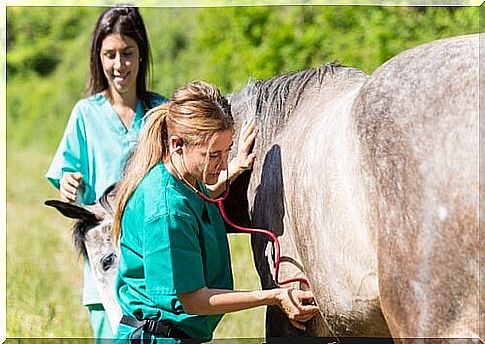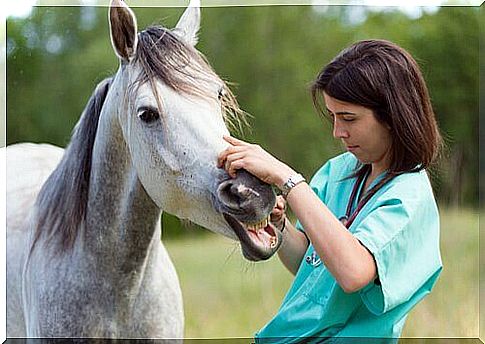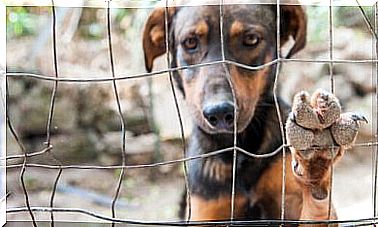Subcutaneous Emphysema In The Horse

When gas or air is found in the layer under the equine skin, favorable conditions are generated in the animal’s organism for subcutaneous emphysema in the horse. However, this is an infrequent circumstance.
The causes can be many, for example it can derive from simple skin wounds, from a thoracic trauma and even for a pulmonary perforation. Horses are the animals most prone to have this disease and, for this reason, in this article we will talk about subcutaneous emphysema in horses .
Causes of subcutaneous emphysema in the horse
Punctures of the abdominal bowels, pulmonary emphysema or the presence of gas-releasing bacteria may be the main etiologies of this condition. As well as wounds in the trachea and esophagus. But also after surgical procedures such as a tracheostomy or endotracheal intubation.
Another of the most documented causes of subcutaneous emphysema is perforation or rupture of the trachea. This situation can be caused by kicks, accidents during sports tests or even accidental cuts made with very sharp objects.

The superficial arrangement of the trachea, below the cervical vertebrae, exposes it to this type of trauma. In horses with subcutaneous emphysema, special attention should be paid to possible signs of infectious cellulitis or septicemia due to the possible implications for the subcutaneous tissue.
Subcutaneous emphysema in the horse: the diagnosis
It will be necessary to check for any perforations both at the tracheal level and at the thoracic level, with particular attention to the axillary level. Emphysema present in these areas can have several origins, and careful exploration is important to rule out the accumulation of air in the pleural cavity (pneumothorax). These are typical complications of a possible tracheal trauma, but they also appear in the case of thoracic trauma.
This is why radiographic and ultrasound evaluation of the chest is essential to highlight these processes. Furthermore, the distribution of air can provide important clues to this.
The specialist will also have to assess the horse’s breathing capacity and the appearance of possible complications on a daily basis, while admitted to the clinic. Probably, the most logical thing will be to perform an x-ray and chest evaluation in case the respiratory capacity appears compromised even during hospitalization.

Treatment of subcutaneous emphysema in horses
Regardless of the surgical intervention, which will serve to occlude the channel or hole that allows the entry of air, it is necessary to establish an antimicrobial treatment to avoid infection of the subcutaneous tissue. The use of penicillin is discounted and the doses will be the same as for situations with a high degree of infection.
The use of anti-tetanus serum, generally administered daily to horses with subcutaneous emphysema, is also recommended. This is due to the particular danger of tetanus in horses and the risk posed by the possible spread of the bacterium that triggers this infectious disease.
Regarding the wound caused by the entry of air, the state of the tissues should be evaluated by tracheoscopy, since small perforations can be closed with fibrin seals in as little as 24-48 hours. However, larger orifices should be closed in the operating room to prevent the progress of subcutaneous emphysema.









